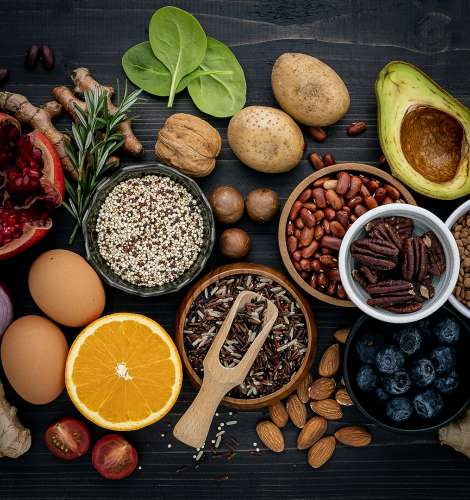Can fibre consumption be designed and personalized? To answer this question, we need to understand how our benefits from fibre are derived.
Fibre cannot be digested like some other foods such as meats and potatoes. They are fermented and broken down (metabolized) in the colon by our gut microbiome. Understanding how diet affects gut microbes and thereby influences human health might lead to targeted dietary strategies. However, trying to harness a diet with the desired effect is challenging because the gut microbial community (also known as the microbiome) is highly complex and individualized.
Dietary responses are modulated by multiple hereditary and non-hereditary factors, such as genetics, mode of birth, mother's gut microbiome and diet, immune and nutritional status, diet,sleep, environment factors (including geographic, climate, altitude, and pets and people living in the same household), physical fitness, diseases and general health, and medications, among others.
A recently published studyfocussed on dietary fibre. The researchers used germ- free mice — animals raised and maintained in a sterile environment that are devoid of the usual resident microbes of any sort, including those naturally found in their gut.
The team colonized the gut of each of nine mouse groups with the microbiome of one of nine obese women. The mice were continuously fed a low-fibre, high-fat diet, coupled with periodic fibre supplementation. Their microbiome was characterized to assess gene content (the level of particular genes present) before, during and after each episode of fibre supplementation.
Three types of fibre were fed to the mice. Each supplementation cycle was followed by a ‘washout’ period to enable intestinal clearing of that particular fibre, thereby allowing the researchers to identify the effects of each individual type of fibre. Pronounced shifts in the composition of gut microbes in response to fibre supplementation were shown. They used an approach that revealed a particular fibre resulted in a greater presence of genes that encode proteins needed for the breaking down of that fibre.
For example, consumption of cellulose-containing pea fibre led to a higher representation of genes encoding the β-glucosidase enzymes that hydrolyse pea fibre, probably owing to the proliferation of bacteria that can use it's cellulose as an energy source. Similar signatures of fibre-responsive genes became highly abundant throughout various bacterial taxa including, but not limited to Bacteroides. The bacterial taxa that rose to dominance shared a competitive advantage in their response to the presence of the respective fibre.
The researchers then examined whether these findings are true in humans. They characterized the microbiome of 12 overweight or obese study participants before, during and after pea-fibre dietary supplementation. The microbial gene responses to fibre supplementation in humans largely resembled those observed in mice.
The researchers also tested whether consumption of multiple fibre types results in a greater microbiome shift than was observed upon consumption of pea fibre alone as a supplement. For this study, a group of 14 individuals received a diet supplemented with a combination of two and then four types of fibre. The results indicate that the more types of fibre an individual consumes, the greater the rise in the number of microbial genes involved in fibre metabolism.
Changes in fibre-responsive enzymes also were closely correlated with changes in the blood plasma levels of proteins that are associated with specific metabolic and immune functions.
These findings provide a framework for optimizing an individual’s fibre consumption, based on fibre type and their gut microbiome fibre-degradation signatures.
The fibre-degradation capacity of individuals with habitual low levels of fibre consumption may be recovered by increasing their fibre consumption through designed, targeted and personalized fibre selection.
The researchers suggested that the gut microbiome is a key modulator of physiological food responses and associated individual differences in such responses.

